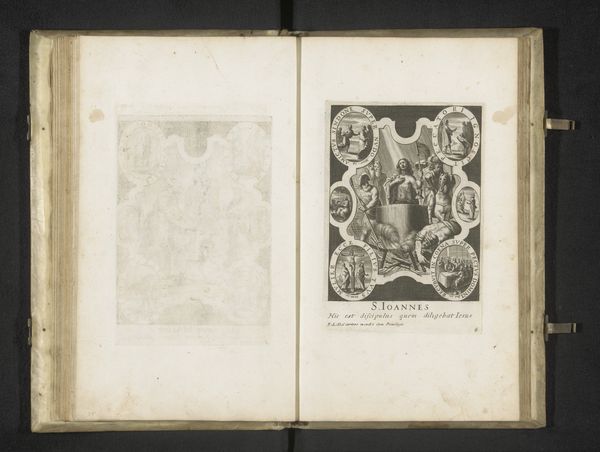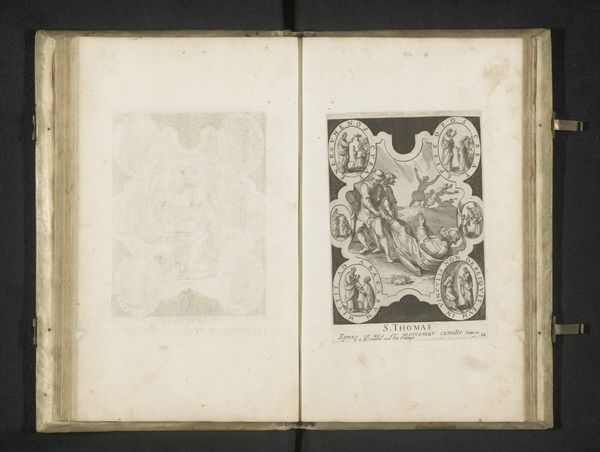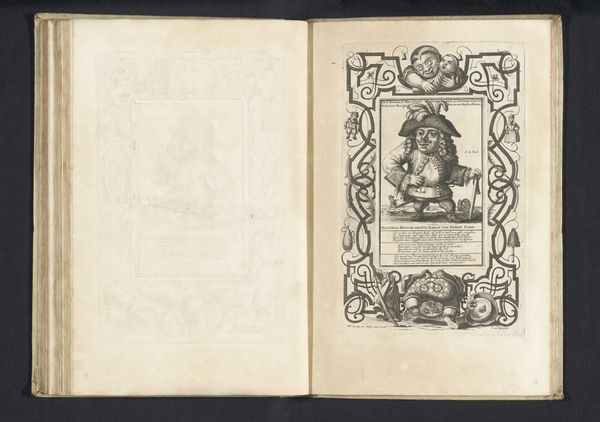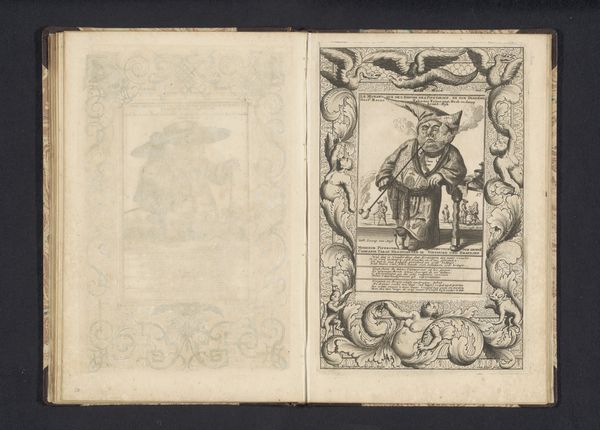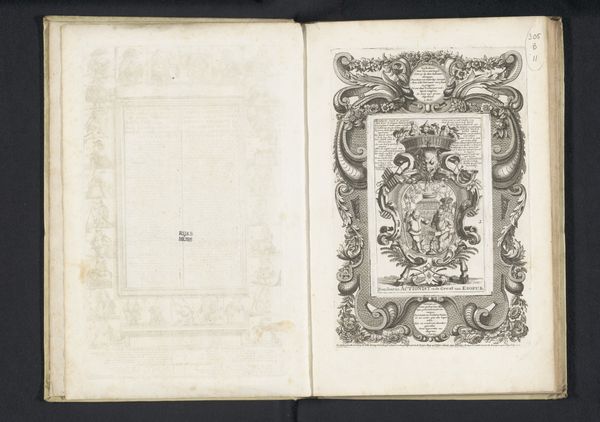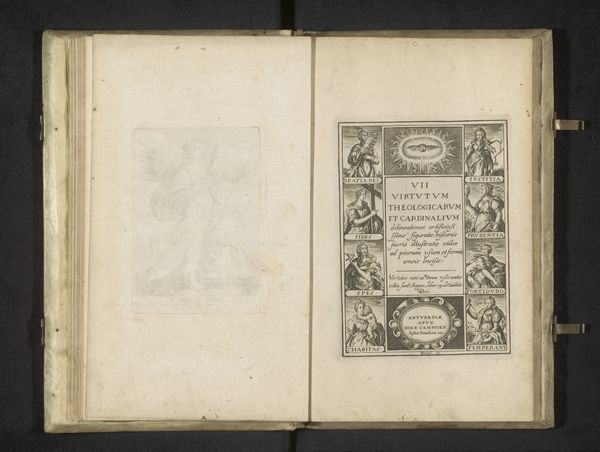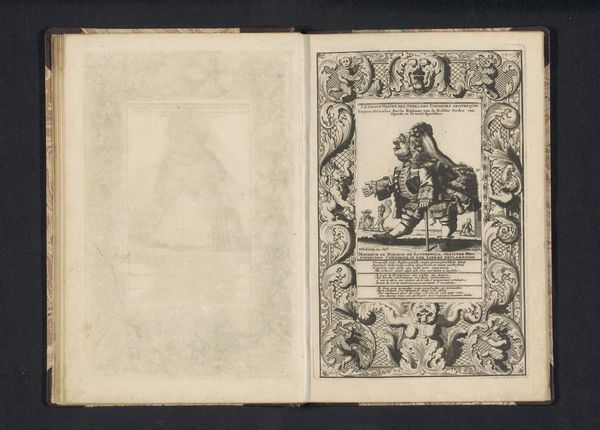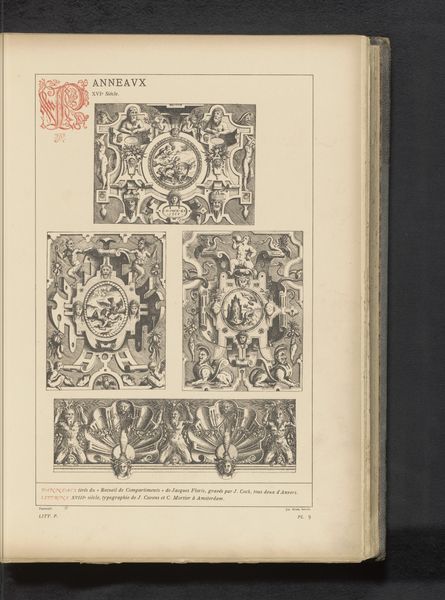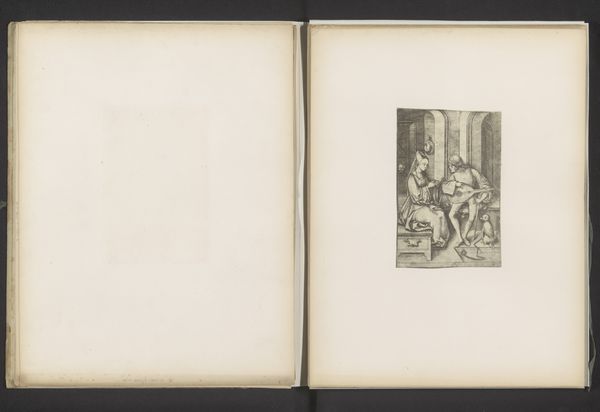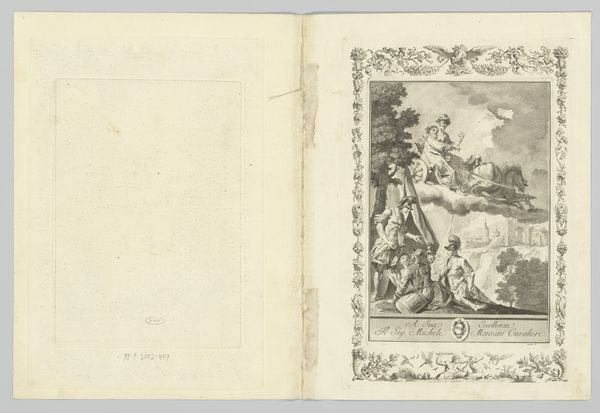
print, paper, engraving
#
baroque
# print
#
figuration
#
paper
#
history-painting
#
engraving
Dimensions: height 178 mm, width 119 mm, height 298 mm, width 182 mm
Copyright: Rijks Museum: Open Domain
Editor: Here we have an engraving, "The Martyrdom of Matthias," dating from 1610 to 1647, displayed in an open book. The detail is quite striking, and the central scene, which is quite violent, is surrounded by smaller scenes of the Saint’s life. How do you interpret this work in light of its historical context? Curator: This piece offers a lens into the intersection of religious devotion and power structures in the early modern period. Martyrdom, particularly as depicted here, wasn't just a personal act of faith. It was a potent symbol of resistance against perceived corruption or tyranny. Editor: Resistance? I hadn't thought of it that way. Curator: Consider who this image might have been created for, and how it may have been used to promote specific religious or political ideals. Matthias' story becomes a call to action. How might contemporary social and political dynamics influence the production and reception of this artwork? Does it feel empowering? Oppressive? Both? Editor: Thinking about it as resistance adds a layer of complexity. The violence, framed in religious terms, could certainly motivate believers to stand firm, even in the face of persecution, or to become active participants in creating radical change. Curator: Exactly! And the Baroque style with its dramatic composition would amplify those emotions. So how might an understanding of both religious belief and period social upheavals deepen your own appreciation? Editor: This engraving feels more relevant now. Examining how images like this reinforced identity and resolve against oppression is enlightening. Curator: It demonstrates the powerful connection between artistic expression and cultural discourse. There is always another story!
Comments
No comments
Be the first to comment and join the conversation on the ultimate creative platform.
